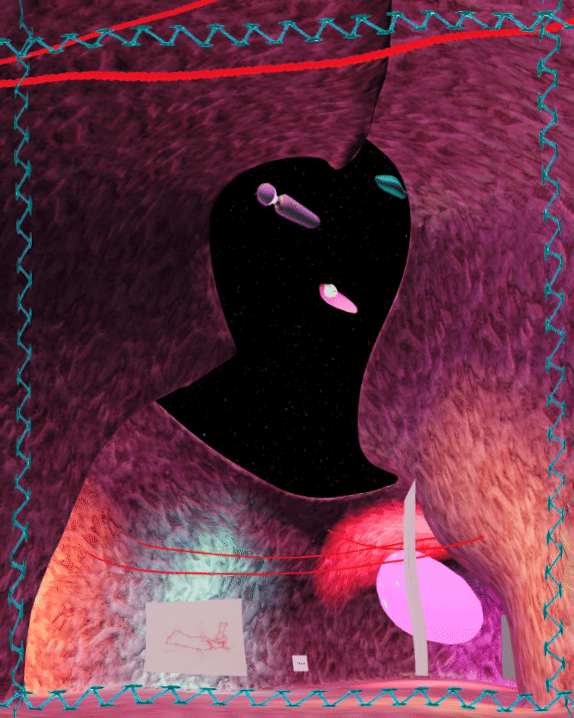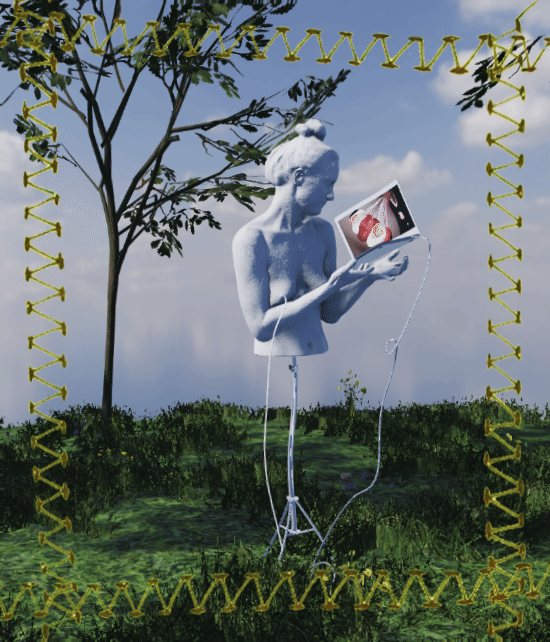about the virtual exhibition
How might we utilize digital technologies, online spaces, and modes of creation to glitch (disrupt) emerging forms of injustice, share stories, communicate lived experiences, and build collective resistance?
glitching reproductive injustice
This online exhibition is informed by reproductive justice, a feminist framework and transnational movement created by Black women and lead by BIPOC activists. Reproductive justice work challenges silence toward transgenerational histories and continued practices of reproductive discrimination, coercion, and violence, moving beyond individual “choice” toward collective equity and access. Reproductive justice advocate Loretta Ross defines the tenets of the reproductive justice movement as the human right to have children, to raise children & kin in safe and sustainable communities, to not have children, and the overall necessity of bodily autonomy, including self-determination surrounding gender and sexuality (2022).
In the digital age, reproductive health experiences world-wide are increasingly entangled with technologies, necessitating the examination of emerging forms of injustice, ranging from data-driven abortion surveillance to content suppression/censorship and disinformation campaigns related to reproductive/sexual health advocacy, to bias-laden laden AI-powered systems. These co-emergent phenomena exacerbate existing inequities, disproportionately harming marginalized communities.
Yet, activists in the global reproductive justice struggle (such as SisterSong, inroads, Women on Web, Fòs Feminista, and Shout Your Abortion) are simultaneously utilizing digital networks to share experiences, build solidarity, circulate information, and promote access to essential reproductive/sexual health services.
This virtual exhibition explores the potentials of art-centered digital reproductive justice advocacy/storytelling, drawing inspiration from Legacy Russell's Glitch Feminism: A Manifesto (2020). Russell conceptualizes the glitch, a moment of technological non-compliance, as a form of feminist/queer intervention that challenges entrenched systems of oppression, emphasizes fluid selfhood, and mobilizes resistance through digitally engaged cultural production.
The artists featured in the exhibition represent a variety of geographies and communities, and they illuminate the multiple facets of reproductive justice. Their works explore themes such as historical/ongoing anti-Blackness, grassroots organizing and mutual aid, connections between natalism/anti-natalism and nationalism, gendered forms of labor and surveillance, queer eroticism, sexual pleasure and stigma, connections between the body and the land, colonialism and reproductive control, and expanded practices of care.
virtual worlds
Each artist’s works are housed within a unique immersive virtual world, a 3D environment navigable much like a PC game. Embedded within each world are short audio stories (with caption videos) featuring the artists’ voices, designed as entry-points to enhance encounters with the works. On each artist’s page is an assortment of recommended readings/resources related to their works and a series of “participatory prompts,” designed to encourage critical engagement with the virtual worlds.
The virtual worlds embody a patchwork of perspectives – an assemblage of personally and contextually specific reproductive justice concerns, held together by shared threads representative of the collective transnational need for bodily autonomy.
The exhibition overall is intended as an interactive teaching/learning space, a living resource that honors personal/shared experiences and encourages critical reflection, dialogue, and understanding.
Join the online community on the exhibition Discord server to share your reflections and responses to the participatory prompts!
Note: Discord is an online communication app. While moderated, the Discord server is not end to end encrypted. Read more about digital harm reduction in the Vagina Privacy Network’s guide to digital reproductive health privacy/surveillance here.
creator information
This project was created by Maggie-Rose Condit-Summerson (she/they), a feminist/queer artist/educator, as part of Maggie’s dissertation research, Glitch Feminist Worldbuilding for Reproductive Justice (2024). Maggie earned her dual-title PhD in Art Education and Women’s, Gender, & Sexuality Studies at Penn State University in 2024. Learn more about Maggie’s work here.
Thank you to the artists, Emma Campbell, Dara Etienne, Dianya Mia Hua, Glynnis Reed, Jessica Susan Oler, Katy McCarthy, Kulsum Ebrahim, Michelle Hartney, and Taïr Almor for generously contributing your works and perspectives.
Thank you as well to consultants/multimedia artists/educators Michael Collins and John Summerson for your support in the development of the project, as well as technical artists Craig John, Gillian Sturtz, and Dermot Lynskey.
Please feel free to reach out to Maggie using the contact form below.









